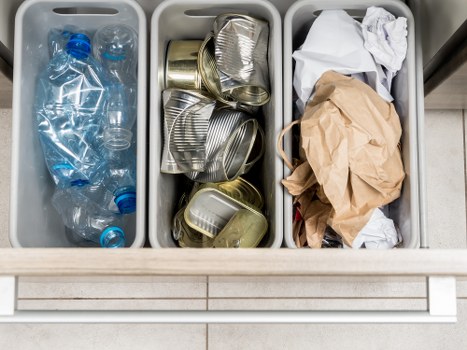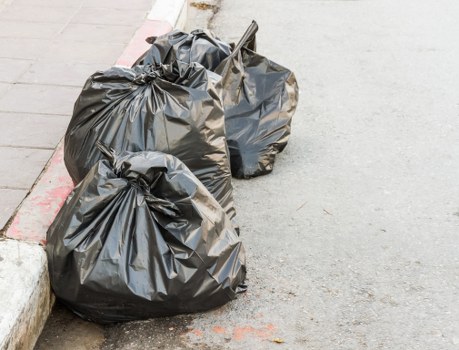Builders Waste Removal in Wanstead

Embarking on a construction or renovation project in Wanstead? One crucial aspect that often gets overlooked is the proper disposal of construction waste. Effective builders waste removal not only ensures a clean and safe working environment but also contributes to environmental sustainability. In this comprehensive guide, we delve into the essentials of managing builders waste in Wanstead, providing you with the knowledge and resources needed to streamline your project.
Wanstead, with its blend of historical charm and modern developments, sees a steady stream of construction activities. From residential builds to commercial renovations, managing waste effectively is paramount. Improper disposal can lead to cluttered sites, increased costs, and potential fines. Therefore, understanding the best practices for builders waste removal is essential for contractors, builders, and homeowners alike.
In the following sections, we will explore the types of builders waste, the regulations governing waste disposal in Wanstead, and the best services available to ensure your project adheres to local guidelines while maintaining efficiency.

Understanding Builders Waste
Builders waste encompasses a variety of materials generated during construction, demolition, and renovation projects. Proper classification and handling are critical to ensure compliance with regulations and to minimize environmental impact.
Types of Builders Waste:
- Inert Waste: Includes materials like bricks, tiles, concrete, and metals that do not undergo any physical, chemical, or biological transformation.
- Non-inert Waste: Organic materials, such as wood and garden waste, which can decompose over time.
- Hazardous Waste: Materials that are harmful to health or the environment, including asbestos, paints, solvents, and certain chemicals.
- Mixed Recyclable Waste: Combines recyclable materials like plastics, metals, and paper with non-recyclables, complicating disposal efforts.
Identifying and segregating these waste types at the source is the first step towards efficient builders waste removal. This not only simplifies the disposal process but also enhances the potential for recycling and waste valorization.

Regulations and Compliance in Wanstead
Wanstead adheres to stringent waste management regulations to promote sustainability and public health. Compliance is not just a legal obligation but a responsibility towards the community and the environment.
Key Regulations:
- Environmental Protection Act: Governs the disposal of waste, ensuring that it is managed in an environmentally friendly manner.
- Waste (England and Wales) Regulations 2011: Sets out the framework for waste classification, handling, and recycling.
- Construction (Design and Management) Regulations (CDM): Focus on minimizing health and safety risks associated with construction waste.
- Local Borough Guidelines: Wanstead borough may have additional requirements or recommendations for waste disposal.
Failure to comply with these regulations can result in hefty fines, project delays, and reputational damage. Therefore, it is imperative to stay informed and adhere to all relevant waste management laws during your project.
Partnering with a licensed waste removal service can greatly assist in maintaining compliance. These services are well-versed in the latest regulations and can provide the necessary documentation and support to ensure your project meets all legal requirements.
Importance of Compliance
Compliance not only avoids legal repercussions but also fosters a culture of responsibility and sustainability. It demonstrates a commitment to reducing environmental impact and promotes the efficient use of resources, aligning with broader societal goals.

Choosing the Right Builders Waste Removal Service
Selecting a reliable waste removal service is pivotal to the smooth execution of your construction project. The right service provider will offer efficient, timely, and compliant waste management solutions tailored to your specific needs.
Factors to Consider:
- Licensing and Certification: Ensure the company is licensed to handle and dispose of construction waste, adhering to all regulatory requirements.
- Range of Services: Look for services that offer comprehensive waste removal, including collection, transportation, recycling, and disposal.
- Reputation and Reviews: Research customer feedback to gauge the reliability and quality of the service provider.
- Cost-Effectiveness: Compare pricing structures to find a service that offers value without compromising on quality.
- Flexibility and Availability: The ability to accommodate your project’s schedule and adjust services as needed is crucial for maintaining project timelines.
Top Builders Waste Removal Services in Wanstead
Several reputable companies specialize in builders waste removal in Wanstead, each offering unique advantages. It's advisable to obtain quotes and consult with multiple providers to determine the best fit for your project’s requirements.
Service Offerings
Typical services include:
- Regular waste collection schedules
- On-site containers and storage solutions
- Recycling and processing of recyclable materials
- Safe disposal of hazardous waste
- Documentation and reporting for compliance purposes

Environmental Benefits of Proper Waste Removal
Effective builders waste removal offers numerous environmental advantages, contributing to sustainable construction practices and reducing the overall ecological footprint of your project.
Key Benefits:
- Resource Conservation: Recycling and reusing materials lessen the demand for raw resources, preserving natural habitats and reducing energy consumption.
- Reduced Landfill Use: Proper waste segregation minimizes the volume of waste sent to landfills, helping to alleviate the strain on these sites and prolong their lifespan.
- Lower Greenhouse Gas Emissions: Efficient waste management practices reduce the release of methane and other greenhouse gases associated with landfill decomposition.
- Pollution Prevention: Proper disposal methods prevent contaminants from leaching into soil and water sources, safeguarding local ecosystems.
By integrating sustainable waste removal practices, builders in Wanstead can play a pivotal role in promoting a greener future, aligning with both local and global environmental objectives.
Recycling Initiatives
Recycling construction waste materials such as metals, wood, and concrete not only conserves resources but also transforms waste into valuable inputs for new projects. Engaging in robust recycling initiatives can significantly enhance the sustainability quotient of your construction activities.
Innovative Recycling Solutions
Advancements in recycling technologies have made it easier to process and repurpose construction waste. Innovative solutions include:
- Concrete recycling into aggregate for new construction
- Metal shredding and reprocessing for manufacturing
- Wood chipping for landscaping and biomass energy
- Plastic recycling for construction materials like insulation and piping

Cost-Effective Waste Removal Strategies
Implementing cost-effective waste removal strategies can lead to significant savings and enhance the overall efficiency of your construction project.
Strategies for Cost Savings:
- Waste Minimization: Planning and efficient resource management can reduce the amount of waste generated, directly lowering disposal costs.
- Recycling and Reuse: By recycling and reusing materials, you can decrease the volume of waste requiring disposal, leading to reduced fees.
- Bulk Disposal: Opting for bulk waste removal can often be more economical than multiple small pickups.
- Negotiating Contracts: Establishing long-term contracts with waste removal services can secure better rates and priority service.
- On-site Segregation: Organizing waste on-site for easy segregation can streamline the disposal process, saving time and labor costs.
Optimizing Waste Collection
Efficient scheduling and coordination of waste collection can minimize disruptions and ensure that waste is removed promptly, maintaining a tidy and safe construction site.
Scheduling Best Practices
Consider the following best practices for scheduling waste removal:
- Align collection schedules with project milestones to prevent accumulation of waste
- Coordinate with multiple projects to optimize waste vehicle routes and reduce costs
- Ensure flexibility in scheduling to accommodate unexpected surges in waste production
By strategically planning waste collection, you can maintain a clean site, enhance productivity, and reduce unnecessary expenses.

Health and Safety Considerations
Proper builders waste removal is not only about environmental and cost benefits but also about maintaining health and safety standards on the construction site.
Health Risks of Improper Waste Management:
- Increased risk of accidents due to cluttered workspaces
- Exposure to hazardous materials leading to health issues
- Pest infestations attracted by unmanaged waste
- Fire hazards from improper storage of flammable materials
Implementing Safety Protocols
To mitigate these risks, it's essential to implement robust safety protocols related to waste management:
- Regularly remove waste from the site to prevent accumulation
- Secure hazardous materials in appropriate containers and designate safe handling procedures
- Train staff on proper waste segregation and disposal methods
- Conduct routine safety audits to identify and address potential hazards
Protective Equipment and Training
Providing adequate protective equipment and training ensures that all personnel are equipped to handle waste safely. This includes gloves, masks, and appropriate disposal tools, as well as comprehensive training on the risks associated with different types of waste.

Innovative Technologies in Waste Removal
The waste removal industry is continually evolving with new technologies that enhance efficiency, sustainability, and compliance. Embracing these innovations can greatly improve your construction project's waste management strategy.
Technological Advancements:
- Automated Sorting Systems: Utilize AI and robotics to efficiently segregate different types of waste, increasing recycling rates and reducing manual labor.
- Smart Waste Bins: Equipped with sensors to monitor fill levels and optimize collection schedules, ensuring timely emptying and preventing overflow.
- Recycling Tracking Software: Helps in tracking materials from collection to recycling, ensuring transparency and compliance with regulations.
- Electric Waste Vehicles: Reduce carbon emissions by using electric-powered trucks for waste transportation.
Benefits of Adopting New Technologies
Integrating these technologies into your waste management plan can lead to:
- Increased efficiency and reduced operational costs
- Higher recycling and reuse rates, contributing to sustainability goals
- Enhanced data tracking and reporting for compliance and optimization
- Improved safety and reduced environmental impact
Case Studies
Many construction firms in Wanstead have successfully implemented these technologies, resulting in streamlined operations, significant cost savings, and enhanced environmental stewardship. Learning from these case studies can provide valuable insights into best practices and potential pitfalls to avoid.
For instance, a local construction company adopted an automated sorting system that increased their recycling rate by 40%, while another integrated smart waste bins to optimize their collection schedules, reducing their waste management costs by 25%.

Sustainable Waste Management Practices
Sustainability is at the core of modern construction practices. Implementing sustainable waste management not only benefits the environment but also enhances the reputation and viability of your construction business.
Key Practices:
- Zero Waste Goals: Strive to minimize waste production and maximize recycling and reuse.
- Material Selection: Opt for sustainable and recyclable materials to reduce environmental impact.
- Lifecycle Assessment: Evaluate the environmental impact of materials and processes throughout the project lifecycle.
- Partnerships with Green Suppliers: Collaborate with suppliers who prioritize sustainability in their operations.
Benefits of Sustainability
Adopting sustainable waste management practices offers numerous benefits, including:
- Reduced environmental footprint
- Compliance with increasingly stringent regulations
- Enhanced brand image and market competitiveness
- Long-term cost savings through efficient resource use
Implementing a Sustainability Plan
Creating a comprehensive sustainability plan involves setting clear goals, identifying key areas for improvement, and establishing metrics to track progress. Engaging stakeholders and fostering a culture of sustainability within your team are crucial steps towards achieving these objectives.
Regularly reviewing and updating your sustainability practices ensures that your waste management strategy remains effective and aligned with evolving environmental standards and technologies.

Case Studies: Successful Waste Removal in Wanstead
Examining real-world examples can provide valuable insights into effective builders waste removal strategies. Several projects in Wanstead have demonstrated exemplary waste management practices, setting benchmarks for the industry.
Project A: Residential Renovation
A major residential renovation project in Wanstead implemented a comprehensive waste removal plan that prioritized recycling and reuse. By segregating waste on-site and partnering with a local waste removal service, the project achieved a recycling rate of 60%, significantly reducing disposal costs and environmental impact.
Project B: Commercial Construction
A new commercial building construction in Wanstead utilized innovative waste management technologies, including automated sorting systems and smart waste bins. These technologies streamlined the waste removal process, enhanced compliance, and minimized project delays caused by waste accumulation.
Project C: Demolition Work
During the demolition of an old structure in Wanstead, strict adherence to waste removal regulations ensured the safe disposal of hazardous materials like asbestos. The project collaborated with specialized waste removal services, ensuring all materials were handled responsibly and in compliance with environmental standards.
Lessons Learned
These case studies highlight the importance of proactive waste management planning, the benefits of utilizing advanced technologies, and the critical role of compliance and collaboration with professional waste removal services.
Best Practices Derived
Key takeaways include:
- Early integration of waste management planning into project design
- Investment in technologies that enhance efficiency and compliance
- Strong partnerships with reliable waste removal service providers
- Continuous monitoring and adaptation of waste management strategies

Future Trends in Builders Waste Removal
The field of builders waste removal is poised for significant advancements driven by technological innovation and increasing environmental awareness. Staying abreast of these trends can position your construction projects for greater efficiency and sustainability.
Emerging Trends:
- Circular Economy Practices: Emphasizing the reuse and continuous cycling of materials to minimize waste generation.
- Advanced Recycling Technologies: Leveraging AI and machine learning to enhance sorting accuracy and recycling rates.
- Green Certifications: Pursuing certifications like BREEAM or LEED that recognize sustainable waste management practices.
- Integration with Smart Building Systems: Utilizing IoT devices to monitor and manage waste in real-time.
- Policy-Driven Innovations: Adapting to evolving regulations that incentivize sustainable waste management.
Impact of Sustainability Initiatives
Sustainability initiatives are reshaping the construction industry, driving the adoption of eco-friendly materials and practices. Builders waste removal is an integral component of this transformation, contributing to the broader goals of reducing carbon footprints and promoting environmental stewardship.
Adapting to Change
To thrive in this evolving landscape, construction professionals must embrace continuous learning, invest in sustainable technologies, and prioritize partnerships that enhance waste management capabilities.
By anticipating and adapting to these trends, your projects can achieve higher levels of efficiency, compliance, and sustainability, ensuring long-term success and positive environmental impact.

Conclusion
Effective builders waste removal in Wanstead is a multifaceted endeavor that involves understanding waste types, adhering to regulations, selecting the right service providers, and embracing sustainable practices. By prioritizing efficient waste management, you not only ensure the smooth progression of your construction project but also contribute positively to the environment and the local community.
Key Takeaways:
- Identify and segregate different types of builders waste for optimal disposal
- Stay informed and compliant with local waste management regulations
- Choose reputable waste removal services that align with your project needs
- Implement sustainable and cost-effective waste management strategies
- Leverage technology to enhance efficiency and compliance
As the construction industry continues to evolve, prioritizing effective waste management will remain a cornerstone of successful and responsible building practices in Wanstead.
Take the Next Step
Ready to streamline your construction project with expert builders waste removal in Wanstead? Contact us today to learn how our specialized services can support your project’s success.

Frequently Asked Questions (FAQs)
1. What types of waste are considered builders waste?
Builders waste includes materials from construction, demolition, and renovation projects, such as bricks, concrete, metals, wood, plastics, and hazardous materials like asbestos and chemicals.
2. How can I ensure compliance with Wanstead's waste disposal regulations?
Partner with licensed waste removal services, stay informed about local regulations, and implement proper waste segregation and documentation practices.
3. What are the benefits of recycling builders waste?
Recycling conserves natural resources, reduces landfill usage, lowers greenhouse gas emissions, and can result in cost savings through reduced disposal fees.
4. How often should waste be collected on a construction site?
The frequency depends on the project size and waste generation rate. Regular assessments can help determine the optimal collection schedule to maintain a clean and safe site.
5. Can hazardous waste be disposed of through regular waste removal services?
No, hazardous waste requires specialized handling and disposal. Always use licensed services that are equipped to manage and dispose of hazardous materials safely and legally.
Need More Information?
For comprehensive solutions tailored to your specific needs, book your service now and ensure efficient and compliant builders waste removal for your Wanstead construction project.